Acer palmatum
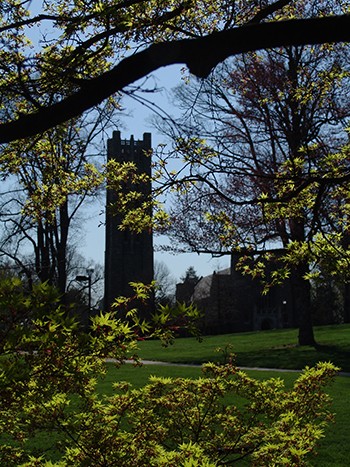 Acer palmatum, often referred to as a Japanese maple, is native to Korea, China, and Japan. They’re beautiful plants, and I thoroughly enjoy how much the cultivars vary.
Acer palmatum, often referred to as a Japanese maple, is native to Korea, China, and Japan. They’re beautiful plants, and I thoroughly enjoy how much the cultivars vary.
Acer palmatum displays many genetic differences. Height and shape can vary between cultivars, but the average for species plants is approximately 25 feet tall. Its habit can change depending on cultivar, but species plants are dome-like at maturity. These plants typically grow as understory trees in the wild. Acer palmatum’s leaves have five, seven, or nine pointed lobes, and the leaf size and shape can vary. The leaves are often the strongest part of the plant for me.
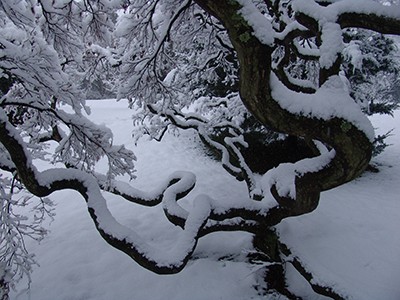
The twisting branches of Acer palmatum ‘Dissectum’ add great winter interest to the garden. photo credit: R. Robert
Acer palmatum is adaptable to different conditions and gets along well with other plants. They are good for paths and shallow areas due to their compact roots. Well drained soil and planting in the spring is advised. While not required if you have enough space, pruning can be nice to give a personal or artistic touch to the plant.
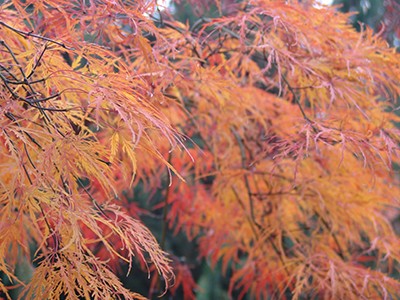
Acer palmatum’s leaves have five, seven, or nine pointed lobes, and the leaf size and shape can vary. The fall color of Acer palmatum‘ Dissectum’ is particular striking. photo credit: R. Robert
Acer palmatum was named by Carl Peter Thunberg after the hand like shape of its leaves.
For hundreds of years, Japanese horticulturists have developed many cultivars, and some drastically differ from the species plants. Since a lot of the allure of this plant is the wide array of cultivars in habit, leaf shape and color, I’d like to cover a few of the ones that stand out at the Harry Wood Garden.
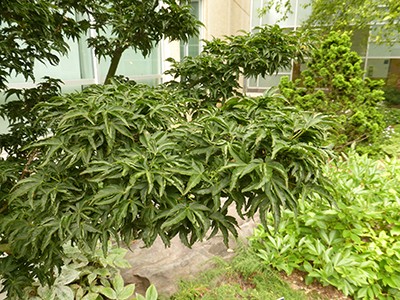
Acer palmatum ‘Shishigashira’ is a slow growing cultivar that only reaches 7 to 15′ tall. photo credit: J. Preisendorfer-McGinnis
‘Shishigashira’ is a slow-growing cultivar that only reaches 7-15’ tall. The crinkled leaves are very interesting, and the fall color is gold and crimson.
‘Tamukeyama’ has a drooping habit with red, lacy leaves. It’s about 8’ tall and 12’ wide. Its fall color is even stronger red.
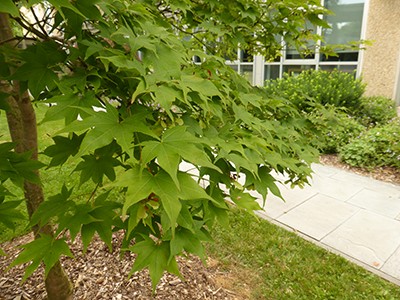
Acer palmatum ‘Hogyoku’ has very nice pumpkin orange fall color. photo credit: J. Preisendorfer-McGinnis
‘Hogyoku’ grows to about 18’ tall and 15’ wide. It has very nice pumpkin orange fall color. Cultivar name is from Japanese for “jewel”.
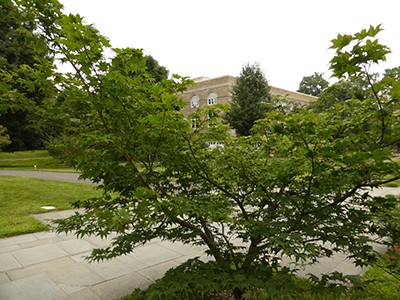
Acer palmatum ‘Utsu semi’ produces bright green when they first appear. photo credit: J. Preisendorfer-McGinnis
‘Utsu-semi’ has purple and red fall color. After 10 years it matures to 9’-12’ tall and wide. Leaves are bright green when they first appear.
These four aren’t even the tip of the iceberg with this great plant. There are hundreds more, which are great and differ greatly!





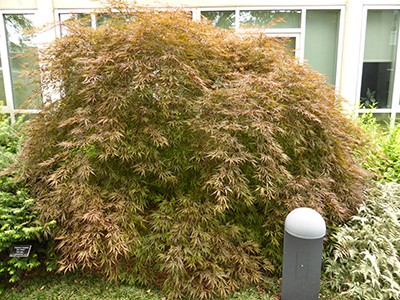
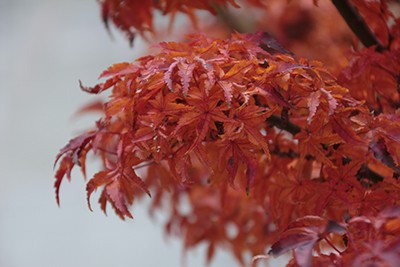
Joan Johnson
Posted at 20:16h, 29 JulyLoved this article. Have a few palmatums and only problem I have seen is that they can die off in this manner. You lose 1 whole side of the tree.
I have one in the backyard which I pruned to try and help it grow out to rebalance a little, and it seems to be working. Now i notice another one…not very near to the first, and a different cultivar; is doing the same thing this year.
So in the fall I will try my pruning skills to help it rebalance and hopefully will not lose the entire tree. It is a really gorgeous one.
Mary Tipping
Posted at 07:36h, 30 JulyJoan — this is very perplexing. Japanese Maples tend to be very hardy and typically do not lose multiple branches at one time. If you would like to send me more information and photos, (i.e. variety, site information, history of the installation location, etc.), please feel free to do so. My email is: mtippin1@swarthmore.edu